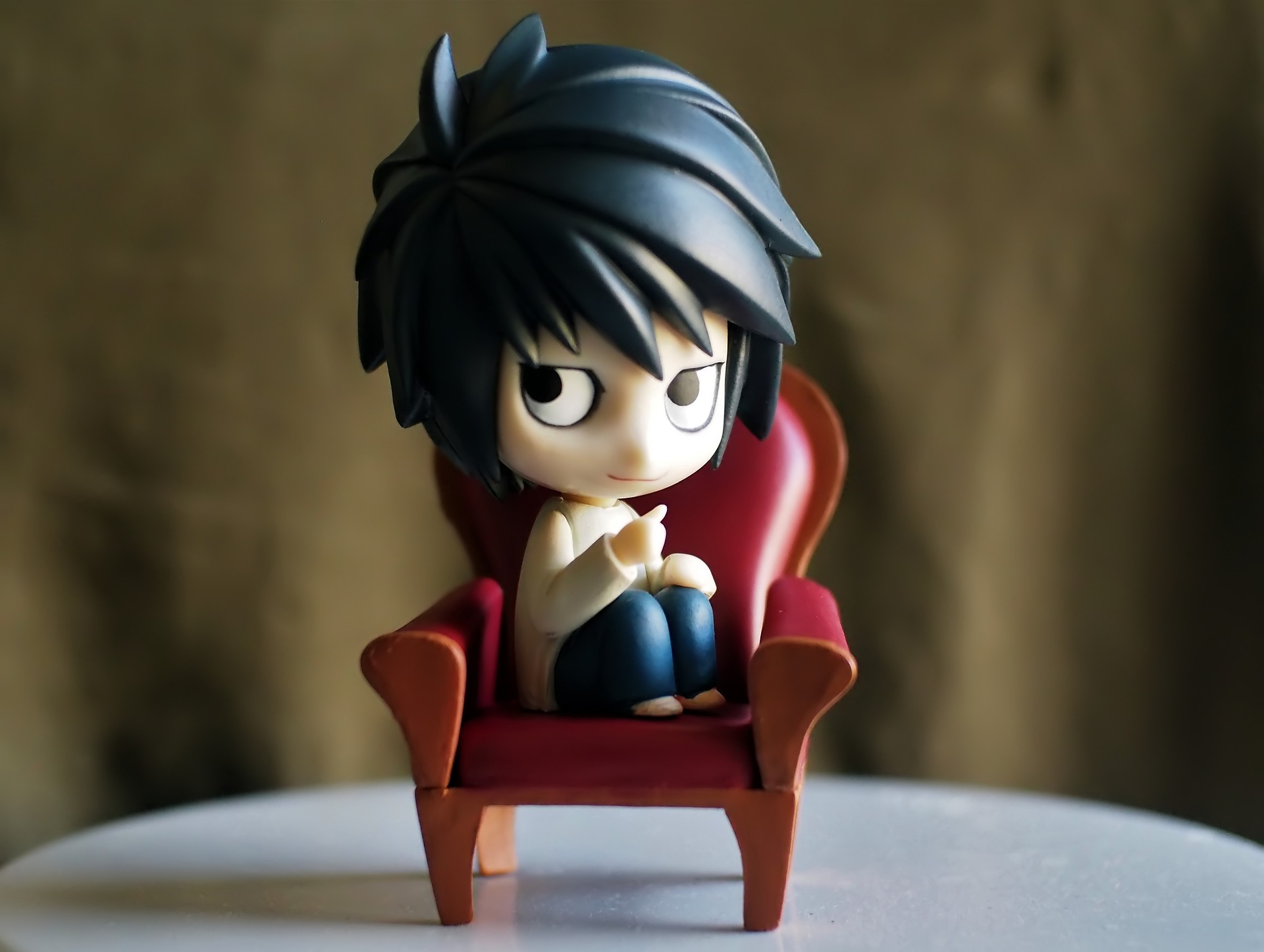Death Note and the pixel-soul
The Death Note anime revolves around the existence of “death notebooks”. Objects that look like ordinary notebooks, but with the power to kill the one whose name is written on the notebook while the writer mentalizes his face. In this way, the owner of a “death notebook” needs to know the name and face of his target to eliminate him with just a pen.
At this point, the name is very objective information. For example, my name is “Marcos Henrique de Paula Dias da Silva”. Any addition, variation, or deletion of a character will form a name different from mine. However, the need to know the target’s face gives space for several discussions, which will be the subject of this text.
A very common question for those who watch this anime is: suppose there are two identical twins, both with the same name, if you write the name of one of them, which one would die?
The explanation for this impasse begins in episode 9. In it, the protagonist Raito, meets in person with the detective and rival L. In this case, L presents himself as the namesake (person with the same name as another) of a very famous actor. The protagonist, although he doubts that this is in fact his real name, is afraid to test the hypothesis, because if at the moment of writing the famous actor involuntarily mentalizes, he could end up killing this actor, and this would indicate to the detective that Raito “took the bait” , providing evidence that he was responsible for the deaths.
Another essential aspect to understand this explanation, is present since the first episode. The fact that the target’s memory need not be in the present. That is, we can remember the target’s face as it was yesterday, the day before yesterday, or a month, a year ago… if we ever saw him and we will think of his face when we write his name in the notebook, the effect will occur . But this gives space for countless changes in his current appearance, the person may have cut his hair, suffered several burns that disfigured him, or even aged, had plastic surgery… the options are endless, but the effect of remembering the face remains .
With this, we can conclude that in a certain way each person has a “soul”, and when we remember his face, we are actually calling this “soul”, which is unique. Thus, despite identical twins, they are two distinct people, each with a “soul” and an associated life. Even if we are unable to differentiate them, the “soul” of the one we call would be the one affected.
However, something present since the first episode of the anime is reason for the interesting discussion that we have prepared in this text. Does this “soul” appear in photos?
In a poetic way, we could imagine the analogue photo as a piece of frozen reality (or actually burned in silver) and thus with a potential to preserve these elements that allow us to “call the soul”, or in a more practical way, to identify the target that we will write the name in the “death notebook”. But what about a digital photo?
In episode 1, Raito was doubting the notebook, and watching the news on television, he came across a criminal who held several hostages. Incredulous about the power of the notebook, he decides to “test it” lightly after watching the face of the criminal identified with his full name on television. Light writes and soon after the man dies. But then the question arises, what did Raito see that served as a memory on his target’s face?
Situation | Result | Consequence |
TV screen | Sharp enough to identify the person | Death notebook effect works |
Half the quality | Sharp enough to identify the person | Death notebook effect works |
¼ of quality | A little blurry, but enough to identify the person | Death notebook effect works |
1/8 of quality | Pretty blurry | ? |
1/1000 of quality | 1 pixel | ? |
At this point we need to analyze two hypotheses:
Hypothesis 1) No matter how bad the quality of the digital image is, the “soul” is always linked to the original image and the “death notebook” would still work.
Hypothesis 2) A low quality digital image does not allow the effect of the “death notebook” to be activated.
Analysis of Hypothesis 1
Assuming Hypothesis 1 as true, we can arrive at an absurdity of having the entire image reduced to the quality of a single pixel and still be possible by mentalizing that pixel, killing the target. For supposedly, your soul would be associated with this pixel, which derives from the original pixels of the image.
But what is a pixel? Pixel is the smallest unit of a digital display. In the case of common color monitors, we can say that each pixel corresponds to a combination of three colors, such as the RGB system (Red, Green, Blue). Which assigns each color an intensity between 0 and 255, that is, 256 options. In this way, each pixel is a square painted with a single color between up to 256³ different colors (this example does not generalize all pixels, only those in the RGB 8-bit system).
In this hypothesis, we could discard the very need of those who write the name in the notebook to keep a complete face in mind. For example, it would be enough to have already seen the tip of the target’s ear, which would be enough for the “death notebook” effect to work. Or in a more extreme case, if this hypothesis were true, the memory on a single square of an entire screen would be enough to write the target’s name and associate the name with the person.
Analysis of Hypothesis 2
Assuming Hypothesis 2 as true, we arrive that there are enough pixels to form the image of a soul. In this way, we can calculate from the size of an image, how many pixels it composes. This allows you to reduce the amount of pixels by isolating only the face of our target. Thinking of photos as they appear in social media chats, let’s say they are no larger than 100×100 pixels.

me
In the photo above, it should be perfectly clear to identify me, although it contains only 10.000 pixels in its digital format. Considering the color possibilities, we have the chance of one in 167.772.160.000 to form this photo by playing random values for the colors of each pixel. This is somewhat disturbing for several reasons which I will list below:
1) A random pixel generator in 100×100 frames, could produce this same image (I mean the same, because there would be no difference even in one pixel). Although unlikely, when repeating the generator for a sufficiently large number of times, such as 150 trillion, the chance of reaching the exact image would no longer be so low. But this means that without ever taking this photo, it would meet exactly the same requirements as a photo that would serve as a “call to my soul”.
2) I can take many 100×100 photos of myself and none of them are identical to this one, although they all represent me. This means that the photos that represent me in 100×100 frames are not restricted to this one. That is, assuming there are thousands of 100×100 photos of me, the chance of forming one of these images will necessarily be at most:
(total-photos) divided by 167.772.160.000
3) I can remove a number of pixels and still represent myself. That is, there is a minimum number of pixels that must correspond to my person to deduce who I am when writing in the notebook.
4) Pigeon pixel principle. There is a curious result in mathematics and at the same time a very simple conceptualization. It says that if we have N houses and N+1 pigeons, at least in one house there will be more than one pigeon.
Similarly, there are almost 7 billion people in the world. If each one has 24.000 photos (all different) in a size 100×100, with this, we arrive that there will be 168.000.000.000.000 photos (pigeons) in the size 100×100.
But the total possibilities for photos is 167.772.160.000 (houses for the pigeons). That is, we will have at least 227.840 exactly the same photos (houses occupied by more than one pigeon).
As each person has 24.000 photos of you, we will have at least 10 people whose photos are identical in each pixel to that of another person. But this means that her “soul call” should be the same, so if two of them with the same photo have the same name, when writing your name and thinking about this photo, both should die.
The situation only complicates when we add that in the anime there are people with “shinigami eyes”, a skill that the holder of the “notebook of death” can buy from the shinigami (angel of death) original owner of the “notebook of death” (you pay half of the life remaining for her). The shinigami eyes allow the person to see the name and life expectancy of any person (except those who have a “notebook of death”). In the case of an image formed by pixels, two people represented by the same pixels but with different names, would lead to an inconsistency when the subject with “shinigami eyes” looks at this photo. Given that both names and life expectancy should appear at the same time, as the image would represent both. In this case, if they also had the same name, it would be impossible to kill one without killing the other.
This leads to contradictory reasoning, invalidating hypothesis 2.
Thus, both hypothesis 1 is strange (since one pixel would be enough to match the image of the person’s face) and hypothesis 2 fails to function as a “call to the soul” in Death Note. With this, either there is a third hypothesis that explains the situation, or the logic behind the mentalization of the face is really flawed and only worked in that universe by the author’s will.

